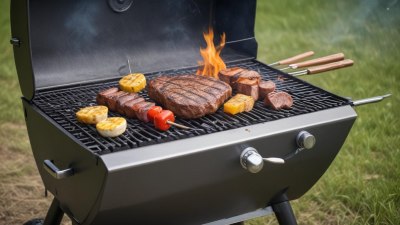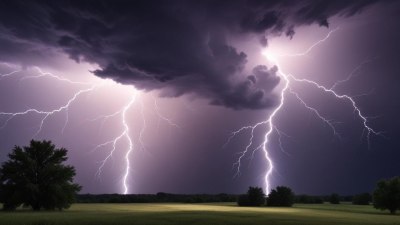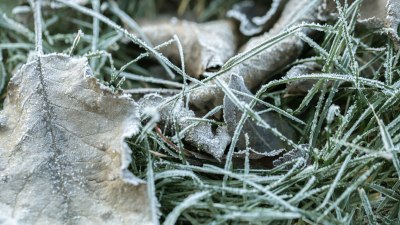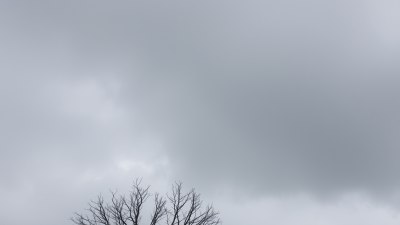How to Tell If It’s Too Windy to Grill or Just a Challenge Worth Taking
Discover how to assess wind conditions for grilling, and learn tips for successful windy grilling.

This image was created with the assistance of Freepik
Grilling is a beloved outdoor cooking method, especially during the warmer months. However, windy conditions can pose both challenges and opportunities for grill enthusiasts. Understanding when it’s too windy to grill and when it’s merely a challenge worth embracing can greatly enhance your outdoor cooking experiences. In this article, we’ll delve into how to assess wind conditions for grilling, tips for successful grilling in the wind, and the safety precautions you should take.
Understanding Wind and Its Impact on Grilling
Wind can significantly affect the grilling process. Strong winds can lower the temperature of the grill, make it difficult to control the heat, and even blow ash and debris into your food. It's essential to evaluate the strength of the wind before you decide to fire up your grill.
A light breeze may not be an issue; in fact, it could even help spread the delicious aromas of your food around. However, once the wind begins to pick up, it can complicate your grilling efforts. Specific thresholds exist to help gauge whether the conditions are favorable.
Assessing Wind Speed
Generally, wind speeds up to 10 miles per hour (mph) are manageable for grilling. At this speed, there may be some minor issues such as slight temperature fluctuations, but they are easy to manage and won’t substantially impact the cooking process. If the wind picks up to around 15 mph, consider this a warning sign. It can extinguish your charcoal grilling efforts and significantly affect gas grills.
Wind speeds exceeding 20 mph can lead to more considerable challenges. At this point, it's crucial to evaluate whether your equipment is stable and whether you can maintain control over your grilling. If your grill is lightweight or unstable, it's probably best to hold off on grilling until the winds subside.
How Wind Affects Different Grill Types
The type of grill you’re using also plays a significant role in how wind affects your cooking. Charcoal grills can be particularly susceptible to wind. The flames are more exposed, and strong winds can easily extinguish them, leading to uneven cooking or smoky flavors in your food. Conversely, gas grills typically provide better control and can withstand some wind; however, high winds can still make it difficult to maintain a consistent temperature.
If you’re using a smoker, the wind can disrupt the flow of smoke and lead to issues with food flavor and moisture. You may need to adjust your methods accordingly, perhaps by using a windbreak or relocating your equipment.
Using a Windbreak
One effective solution to mitigate the effects of wind is to create a windbreak. This can be done by setting up a barrier around your grilling area. This could be as simple as strategically placing outdoor furniture or using a portable windscreen. The goal is to create a calmer environment where the wind can’t directly affect your heat and flames.
Remember that while windbreaks can improve conditions, they must be safe. Avoid creating a situation where flammable materials are close to the flame, as this poses additional risks!
Grilling Safety in Windy Conditions
Safety should always be your top priority when grilling, especially in windy conditions. Here are some best practices: First, set up your grill away from flammable structures, including your home, patio furniture, and trees. This distance becomes crucial in windy conditions where flames may dance unpredictably.
Additionally, always have a fire extinguisher or a bucket of water nearby, just in case something goes wrong. Make sure to keep an eye on your grill and don’t leave it unattended, especially in breezy conditions that could easily alter its stability.
Testing Windy Conditions with Demos
Before your grilling event, conduct a quick test run in varying wind speeds. Experiment with grilling under different wind conditions to see how your grill performs. This preliminary experience can prepare you for how to handle challenges during actual cooking sessions. Note how changes in wind speed affect temperature control, heat circulation, and cooking times.
Choosing Wind-Friendly Recipes
If you do decide to grill on a windy day, consider the type of food you’re cooking. Choose recipes that are more forgiving of temperature fluctuations. Foods that require a longer cooking time, like tougher cuts of meat, can be beneficial as they can withstand a bit of variation in temperature.
In contrast, delicate foods like fish or vegetables may require more precise cooking temperatures and might not be the best choices in windy conditions. Skewers or foil packets can help keep your food protected and allow for even cooking without getting blown off course.
When to Call It Quits
While it may be tempting to push through windy conditions, sometimes it’s best to postpone your grilling plans. If wind speeds are exceedingly high (over 20 mph), if the gusts are unpredictable, or if it starts to look like stormy weather is on the horizon, it’s wise to retreat indoors. Remember, grilling can always wait for a calmer day when you can enjoy cooking without the added stress of adverse weather.
Ultimately, whether to grill in windy conditions depends on your experience level, grill type, and willingness to adapt. Embracing challenges can lead to new techniques and grilling innovations, but there are times when wisdom dictates playing it safe.
Embracing the Challenge or Playing It Safe?
In summary, knowing how to evaluate windy conditions for grilling can deeply influence your cooking experience. While light winds can be managed, heavier winds often signal a need for caution or a change in your cooking plans. With the right preparations, including utilizing windbreaks and selecting appropriate recipes, you can successfully navigate these challenges.
Ultimately, proper awareness of wind conditions and grilling safety enhances the overall enjoyment of your barbecue. Whether you decide to seize the day and grill despite the wind or wait for calmer weather, it is essential to prioritize safety and your culinary satisfaction. Happy grilling!











